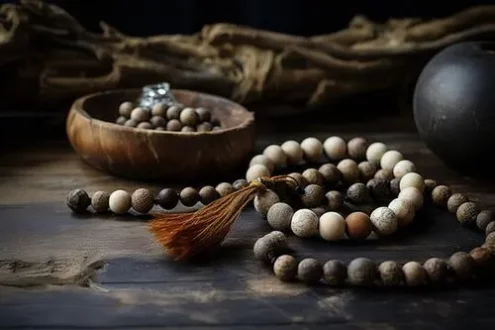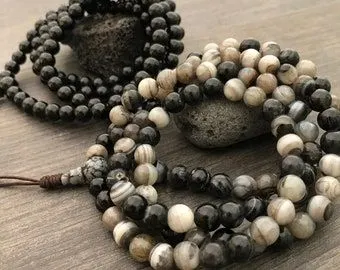Modern Bali retreats perfect for meditation
Bali makes it easy to slow down—especially in homes that pair warm, natural wood with clean, modern comfort. If you’re planning a personal retreat or a small group reset, here’s how to choose the right space and a featured place that fits the brief beautifully.
Why “wooden but modern” works so well for practice
-
Grounding materials: teak and ironwood feel calm under bare feet and soften the acoustics for quieter sits.
-
Open pavilions, crisp lines: contemporary layouts keep clutter out of sight, focus in.
-
Cross-breezes & shade: large eaves and vented panels create a naturally cool “breathable” environment.
-
Indoor–outdoor flow: terraces for sunrise malas; covered lounges for midday journaling when the rain rolls in.
-
Just-enough amenities: fast Wi-Fi for work breaks, strong showers, blackout bedrooms—without breaking the spell.
Featured stay: Villa Kinaree Estate (Seminyak)
Tucked down a quiet lane in Seminyak, Villa Kinaree Estate blends richly grained timber pavilions with generous modern living spaces—think broad decks for dawn breathwork, garden-framed pools for a mindful float, and open lounges that convert into casual shalas. You’re minutes from cafés and the beach, yet the estate feels private and composed—ideal for a week of practice with friends.
👉 Explore this luxury bali villa for your next meditation retreat.



Why it fits the retreat brief
-
Multiple outdoor nooks suited to silent sits or mala rounds
-
Calming garden views that naturally lower the volume
-
Central location for sunset walks, easy transfers, and quiet nights in
Where to look (and what to ask for)
Ubud & surrounds (Penestanan, Sebali, Kedewatan): rainforest hush, rice-field paths, and homes with high wooden ceilings. Ask for a covered bale (gazebo) or dedicated yoga deck.
Sidemen Valley: slow tempo and mountain views. Look for timber joglo houses updated with modern bathrooms and proper task lighting for evening reads.
Seseh & Cemagi (north of Canggu): village calm near the sea. Request flexible furniture (stackable cushions, light chairs) so you can quickly set a practice circle.
Uluwatu ridge: ocean horizon and cliff breezes. Shortlist villas with wind-protected pergolas—great for pranayama without the gusts.

A simple 1-day practice template (repeatable)
-
06:30—Arrive & ground (10 min): sit on the deck, feel feet, count breaths.
-
06:45—108 beads: mantra or breath per bead; walk slowly afterward.
-
08:00—Light breakfast (fruit, porridge, tea).
-
10:00—Reading & notes (choose one text; no phones).
-
16:30—Gentle movement + sit (20–30 min each).
-
20:30—Lights dim, devices off, gratitude list (5 items).
Booking checklist
-
Quiet bedroom per guest (no adjoining nightlife or bar)
-
At least one shaded, non-slip outdoor surface for practice
-
Good night lighting and blackout options
-
Reliable A/C in bedrooms; fans in common areas
-
Staff support for simple, early breakfasts and airport transfers
-
Walkable path or beach within 10–15 minutes (for mindful strolls)
Ready to design your retreat? Start with a wooden-warm, modern-calm base like Villa Kinaree Estate, then layer in a simple daily rhythm. The house will do half the work—your presence does the rest.
How to Find the Best Mala Bead Necklace for You
How to Find the Best Mala Bead Necklace for You
Your Guide to Choosing a Mala with Meaning, Intention, and Heart
Having a precious Mala beads necklace is more than just a beautiful accessory – they are sacred tools for meditation, mindfulness, and spiritual connection. Traditionally made with 108 beads, a guru bead, and often a tassel or charm, mala necklaces have been used for centuries in spiritual practices around the world, especially in Hinduism, Buddhism, and yoga traditions.
But with so many styles, stones, and designs available today, how do you find the best mala bead necklace for your unique journey?
Here’s our guide to help you choose a mala that feels aligned with your energy, intention, and style.
1. Start With Your Intention
The most important part of choosing a mala is knowing your why.
Are you seeking inner peace? Healing? Confidence? Protection? Focus?

Each type of gemstone carries its own energy. For example:
-
Amethyst is perfect for calming the mind and enhancing spiritual awareness.
-
Rose Quartz is the stone of unconditional love and emotional healing.
-
Lava stone helps with grounding and carries essential oils well for aromatherapy malas.
-
Clear Quartz is known as the master healer, ideal for clarity and amplification of intentions.
Choose a mala that supports what you’re working on in your life—whether that’s a new chapter, a healing process, or a deeper spiritual practice.
2. Understand the Materials
Mala beads can be made from many materials, including natural gemstones, wood, rudraksha seeds, or bodhi seeds. Each has its own history and energy.
-
Gemstone malas are often used for healing, chakra work, and manifestation.
-
Rudraksha malas are highly sacred in Hindu tradition and are believed to offer protection and spiritual growth.
-
Sandalwood and rosewood are soft, fragrant woods associated with peace, devotion, and purity.
 When choosing the best mala bead necklace for yourself, go for quality and authenticity. Natural materials hold energy better than synthetics and offer a deeper connection during your practice.
When choosing the best mala bead necklace for yourself, go for quality and authenticity. Natural materials hold energy better than synthetics and offer a deeper connection during your practice.
3. Consider the Number of Beads
Traditionally, a full mala has 108 beads—a number considered sacred across many cultures. Some malas are shorter and contain 54 or 27 beads (known as wrist malas or half malas), which can be more portable and wearable for daily use.
A 108-bead mala is ideal if you plan to use it for meditation or mantra counting. A shorter mala may be better suited for wearing as a reminder of your intention or as a piece of spiritual jewelry.
4. Look at the Style and Craftsmanship
Your mala should feel personal and beautiful to you. Choose colors and designs that resonate with your spirit. Look at:
-
The bead size (small for subtlety, large for boldness)
-
The presence of a guru bead or charm
-
The type and quality of the tassel
-
The way the mala is knotted or strung (hand-knotted malas are often more durable and traditional)
Mala necklaces can be both functional and expressive. If you’re wearing it daily, you might want something simple and strong. For special occasions or rituals, a more ornate or symbolic piece might speak to you.
5. Trust Your Intuition
Sometimes the best mala finds you. If you feel inexplicably drawn to a particular one, trust that feeling. Mala beads carry energy, and often your spirit knows what you need before your mind does.
Hold it in your hands (if shopping in person) or look at it closely (if browsing online). Does it bring you a sense of peace, comfort, or curiosity? If yes, that’s a strong sign it’s meant for you.
Final Thoughts
Finding the best mala bead necklace is a deeply personal journey. Whether you use your mala for meditation, wear it as a reminder of your inner goals, or simply appreciate its beauty and symbolism, let it be a reflection of your authentic self.
At Mala Peace & Love, we celebrate the power of intention, energy, and spiritual expression through every bead. Stay tuned to our blog for more guides, rituals, and stories that support your mindful path.
The Meaning of Spiritual Jewelry: More Than Just Beautiful Adornments
The Meaning of Spiritual Jewelry: More Than Just Beautiful Adornments
Why the pieces you wear can hold deeper energy, intention, and healing
In today’s fast-paced, modern world, many people are rediscovering ancient ways of finding balance, inner peace, and purpose. One beautiful and accessible path to spiritual connection is through the wearing of spiritual jewelry—adornments that are rich in symbolism, intention, and energy.

But what exactly is spiritual jewelry? And why has it become such a meaningful part of so many people’s lives?
Let’s explore the deeper meaning behind these sacred pieces—and why they are so much more than just decorations.
What Is Spiritual Jewelry?
Spiritual jewelry refers to any piece—necklace, bracelet, ring, or pendant—that is designed or worn with a spiritual or energetic purpose. These items often carry symbols, sacred geometry, mantras, healing crystals, or natural materials believed to influence the energy field of the wearer.
Unlike regular jewelry, which is chosen mainly for fashion, spiritual jewelry is chosen for its vibration, meaning, and connection to something greater—whether that be peace, protection, love, or awakening.
The Power of Symbolism
Symbols have been used in spiritual traditions for thousands of years. Many spiritual jewelry pieces incorporate:
The Lotus Flower – representing purity, transformation, and spiritual growth
The Om Symbol – a sacred sound in Hinduism and Buddhism, symbolizing the universe and unity
The Tree of Life – a universal symbol of connection, grounding, and growth
Hamsa Hand or Evil Eye – protective symbols that ward off negative energy
Sacred Geometry – patterns like the Flower of Life that reflect the structure of the universe
 Wearing these symbols can serve as a powerful reminder of your personal beliefs and spiritual journey. They invite mindfulness and help keep your focus on what matters most.
Wearing these symbols can serve as a powerful reminder of your personal beliefs and spiritual journey. They invite mindfulness and help keep your focus on what matters most.
Crystals and Gemstones: Energy You Can Wear
One of the most popular elements in spiritual jewelry is the use of crystals and natural gemstones. These stones are believed to carry unique vibrations that interact with your body’s energy field (or aura). While science doesn’t officially confirm crystal healing, many people experience real emotional or spiritual benefits.
Some popular stones and their meanings include:
Amethyst – intuition, spiritual clarity, calm
Rose Quartz – unconditional love, compassion, heart healing
Black Tourmaline – grounding, protection, energetic cleansing
Citrine – abundance, creativity, joy
Lapis Lazuli – wisdom, truth, inner vision
Wearing gemstone jewelry helps you carry the energy you wish to attract—right on your skin, close to your energy centers.
Intention Is Everything
The true meaning of spiritual jewelry is found in the intention behind it. Whether you wear a mala for meditation, a rose quartz pendant to open your heart, or a chakra bracelet to stay balanced, it’s your personal connection to the piece that gives it power.
Before wearing spiritual jewelry, many people like to “charge” it with an intention, using a short ritual like:
Holding the piece in your hand
Taking a few deep breaths
Silently stating your intention (e.g., “I welcome love and peace into my life”)
Wearing it mindfully each day
In this way, your jewelry becomes a tool for self-awareness and spiritual growth.
Wearing Your Spiritual Practice
One of the most beautiful things about spiritual jewelry is that it allows you to wear your spiritual path with pride and grace. It can serve as:
A daily reminder of your goals and values
A calming presence during stressful times
A connection to your higher self or spiritual beliefs
A protective talisman when you feel vulnerable
Each piece becomes part of your story—an expression of who you are and who you are becoming.
Final Thoughts: Beauty with Meaning
Spiritual jewelry blends the outer beauty of design with the inner beauty of intention. Whether simple or ornate, each piece has the potential to uplift, protect, and guide. It’s not just about what you wear—it’s about how you feel when you wear it.
At Mala Peace & Love, we believe in honoring the ancient wisdom behind these pieces and supporting your spiritual journey with authenticity and love. May every bracelet, pendant, or mala you choose be a step closer to your true self.
